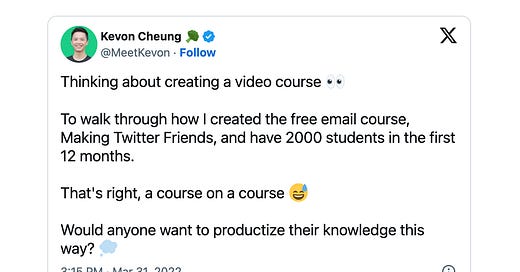[Sundays Deeps #1] The sawdust economy as a cure to creator burnout?
(it's not about woodworking)
500 hours of content is uploaded every minute on YouTube according to their blog.
A LinkedIn article mentions that 4.6 billion pieces of content are produced daily (no source cited).
On Twitter alone, more than 800 million tweets are posted each day.
Whatever the accuracy of those numbers, they are huge.
Bigger than what our mind can visualize.
And the lifetime of this content is very short, forcing creators to produce more content at scale to get a chance to be seen.
The consequences are that:
Content creators are pushed to produce more and more (with a real risk of burn-out)
A lot of content has a low impact even if it is of high quality. The algorithm is unfair for accounts with a small following.
Thousands of creators are wasting hours of work producing this content that adds to social media’s constant noise.
Kaya Yurieff, a reporter on the creator economy, confesses when talking about creators’ wellbeing:
“Many influencers tell me they feel they can’t take time off. It’s like they’re on a never-ending hamster wheel. It’s not just balancing brand work with organic posts, it’s the way social media platforms reward people who post frequently.” (Source: Mailchimp)
As titled by Tatiana Cirisano on Midia Research’s blog, the creator economy has a sustainability problem.
Using creation sawdust as a solution for sustainability?
This is not new, but the thesis I propose in this article is that using more systematically the sawdust produced during the creation process could help the creator economy to be more sustainable.
The idea came from a discussion on Twitter with Jason Leow and Kevon Cheung.
Kevon was tweeting:
This is an exciting example of using creation sawdust to create more content and monetize it, as noticed by Jason:
I love how in a way this parallels the ‘green’ circular economy in the physical/consumer products space. That we creators can repurpose throughputs, turn by-products into products, embodies the “no waste” philosophy!
Repurposing the by-products of content or product creation reduces the need for new content. It reduces the waste creators experience and revalues their time.
Because, after all, time is the most precious resource we have.
Developing sustainable processes (via tools and systems) can free up some time and avoid burnout while giving valuable content to the audience.
I will go a step further here.
The problem arises from the “need” to create fresh content at an intensive pace because social media platforms monetise the attention of their users and reward creators able to gain more followers (and keep them on the platform).
But followers come and go.
If a creator doesn’t show up often enough (or less than another creator in the same niche), they will shift their attention to the other creators.
In contrast, if a creator can create fans, they will wait and be there even if the creator takes a break or slows down. And one way to generate fans is to become more relatable, to show the behind-the-scenes dirty work.
The solution may be in the sawdust of the creative process.
Sharing this raw material shows the creator’s more human and approachable side.
There are many examples already, such as musicians explaining their processes and opening the doors of their studios, for example.
One of my favourite guitar players, Steve Vai, used to sell (expensive) VIP concert packages to his fans, with backstage access and other extras that don’t take much time from him. Just getting more exclusive access to him and what going on before and after the concert.
“Sure, he’s famous” you can argue.
Agreed, but it works for more modest creators: it is a typical asset sold by creators on membership platforms such as Patreon. They give access to behind-the-scenes videos and drafts to paying members.
No doubt that creation sawdust can be monetized and is part of the creator economy.
What is the future of the sawdust economy?
I would argue that there is still a lot to explore and understand to establish more clearly what is the sawdust economy.
For example, sawdust is more valuable when coming from more mature creators. Think influencers, big movies, or music stars. They already have a large fan base because they have a track record, sometimes over decades of professional performances or creations.
That’s the case of Steve Vai as we saw earlier.
But the journeyman business model could help a younger creator gain traction on the way to mastering her craft.
Not so much to support her financially at the start but to build up this precious fanbase that will later sustain the creator.
Honestly, this is an open question for me and I don’t have the answer on how this could be leveraged more systematically.
But it seems that consumers (which we also are as creators) will want more direct relationships with their favourites.
It’s already the case, but with the lowering of the barrier to entry in the creator economy, notably thanks to AI tools, it should become much more prevalent shortly.
Memberships and communities are booming.
Alex Hormozi announced this week his investment in the platform Skool.
That’s a clear sign.
The thing is that as a community host, you have to feed your members with new stuff. It could be a part of it: sharing your drafts, tests, and failures in real time.
Takeaway
The creator economy is growing, and I bet the sawdust economy will become a larger part of it.
If you’re not doing it already, you should think about how to strategically use your sawdust to grow your audience and make fans (not only followers).
Show the quirks and fails. Share half-baked creations and explain how you are working on making them better.
Be great,
Frank
PS: there’s a sawdust economy for wood… cool!





